What is content marketing?
Content marketing involves creating and distributing helpful and relevant content – such as blog posts, newsletters, white papers, social media content, email newsletters, and videos.
The key is to provide genuine value that educates, entertains, or inspires your target audience. By consistently delivering informative content, you're not just capturing attention but establishing yourself as a thought leader in your domain.
As people consume your content and find it helpful, they're building a positive association with your brand. You're educating them about industry trends, addressing their pain points, and offering solutions – all through helpful content without being salesy. This subtle influence builds trust and a positive reputation.
When customers eventually need to buy a product or service related to your field, they'll recall the brand that consistently provides them with the best content.
How does content marketing work
New customers research options, weigh pros and cons and ultimately decide which brand to trust. Content marketing allows you to be there every step of the way, influencing their decision and ultimately driving sales.
Your content marketing strategy is like a funnel. At the top, the funnel is wide, attracting a broad audience with informative content. As potential customers move down the funnel, your content becomes more targeted, addressing their specific needs and positioning your brand as the solution.

ToFu (Top-of-funnel): Attract and educate
This is the first step where you capture attention and build awareness. People are just starting their research, so focus on informative content that addresses their pain points and challenges.
Content types:
- Short social media videos (reels, stories) with tips or quick facts (e.g., "5 signs you need new running shoes")
- Blog posts on broad topics related to your industry
- Infographics that explain complex topics in a visually appealing way
Example:
- A sustainable clothing company creates a blog post titled "The Ultimate Guide to Eco-Friendly Running Gear" to attract environmentally conscious runners.
MoFu (Middle-of-funnel): Nurture and engage
Now, your audience is considering specific options. Offer content that educates them about features, benefits, and how different solutions address their needs. In this step, content marketers often subtly highlight their brand's strengths.
Content types:
- How-to articles or guides that address specific needs (e.g., "How to choose the right running shoes for your foot type").
- Webinars or ebooks with in-depth information on a particular topic.
- Case studies showcasing how your product or service helped others.
Example:
- A fitness app creates a downloadable ebook outlining a personalized training plan for first-time marathon runners, subtly highlighting features within their app that support the training program.
BoFu (Bottom-of-funnel): Convert and close
The prospect is now very close to buying. Now, you should focus on sales-oriented content that emphasizes your expertise and positions your brand as the best choice.
Content types:
- Customer testimonials praising your product or service.
- Product demos or reviews that showcase features and benefits.
- Buyer guides that compare different options and highlight your product's strengths.
- Research reports that establish your brand as an industry leader (e.g., "The best running shoes for different foot types")
Example:
- The sustainable clothing company from the top funnel features customer testimonials from runners who love the comfort and eco-friendly materials of their running shoes.
By providing valuable content at each stage of the customer journey, you build trust and establish yourself as an industry leader. People come to rely on your expertise, making them more likely to choose you when the time comes to buy.
What makes content marketing essential
Content marketing offers a multitude of benefits for businesses of all sizes. Here are 5 benefits of content marketing you must know about.
1. Builds brand awareness
By creating insightful articles, engaging videos, or informative infographics, you establish yourself as an industry leader within your niche. People start recognizing your brand as a trusted source of information and a go-to source for addressing their challenges.
Content marketing taps into this human tendency to trust experts. By consistently delivering valuable content, you're not just promoting your brand – you're becoming a brand consumers can rely on. This trust translates to sales when your brand is top-of-mind for their needs.
2. Drives traffic and leads organically
Content marketing feels less like a marketing tactic and more like a helping hand to your audience. You're providing practical solutions and precise answers to their questions. As they consume your content and find value, they're more likely to convert into leads.
Search engines reward websites with informative and helpful content. By optimizing your content for relevant keywords, you can improve your website's ranking in search results, leading to a rise in organic traffic. Furthermore, well-crafted content that addresses your audience's pain points naturally nurtures leads.
3. Reduces cost of customer acquisition
Content marketing costs 62% less than traditional marketing methods, generating three times as many leads. By investing in creating high-quality content once, you set in motion a long-term customer acquisition strategy.
This informative content attracts potential customers organically, drawing them in with its helpful nature. There's no need for constant ad spending to maintain visibility – your content becomes the magnet that pulls them in. This content continues to work for you over time, nurturing leads and being budget-friendly at the same time.
4. Boosts brand loyalty
By consistently distributing content that addresses your ideal customer's needs and interests, you're not just informing them – you're engaging them in a meaningful conversation. They keep coming back for more, eager to see what valuable insights you'll offer next.
This fosters a strong sense of brand loyalty. Customers who find value in your content begin to see you as a brand that genuinely cares about their requirements. This loyalty translates into several benefits, like repeat customers and positive word-of-mouth. It's a win-win situation for your brand and your customers.
5. Increases sales and conversions
Content that solves problems is like a free trial - it shows your value before they buy. People who find helpful solutions in your content are already primed to consider your products or services as the next logical step. When they perceive you as a reliable resource, it reduces the perceived risk of purchase and makes them more comfortable making a buying decision.
By being helpful at every step, you're nurturing leads and guiding them toward a natural conversion point – purchasing your product or service.
Content distribution channels
The beauty of content marketing lies in its versatility. You can reach your target audience through a variety of content formats, each catering to different preferences and stages of the buyer's journey. Leveraging various platforms and channels will help you develop your brand’s voice.
1. Blog posts
Blog posts offer a platform to showcase your brand's knowledge, engage your audience, and establish yourself as an authority in your industry. This could range from product guides to step-by-step guides. Given below are a few ideas you can implement to create catchy blog posts.
- Regularly publish informative blog posts that address topics relevant to your industry and target audience.
- Showcase your expertise by providing insightful analysis, practical advice, or commentary on current trends.
- Utilize clear and concise language, along with visuals like images or infographics, to enhance readability and understanding.
- Create a content calendar and consistently publish well-researched and SEO-optimized articles.
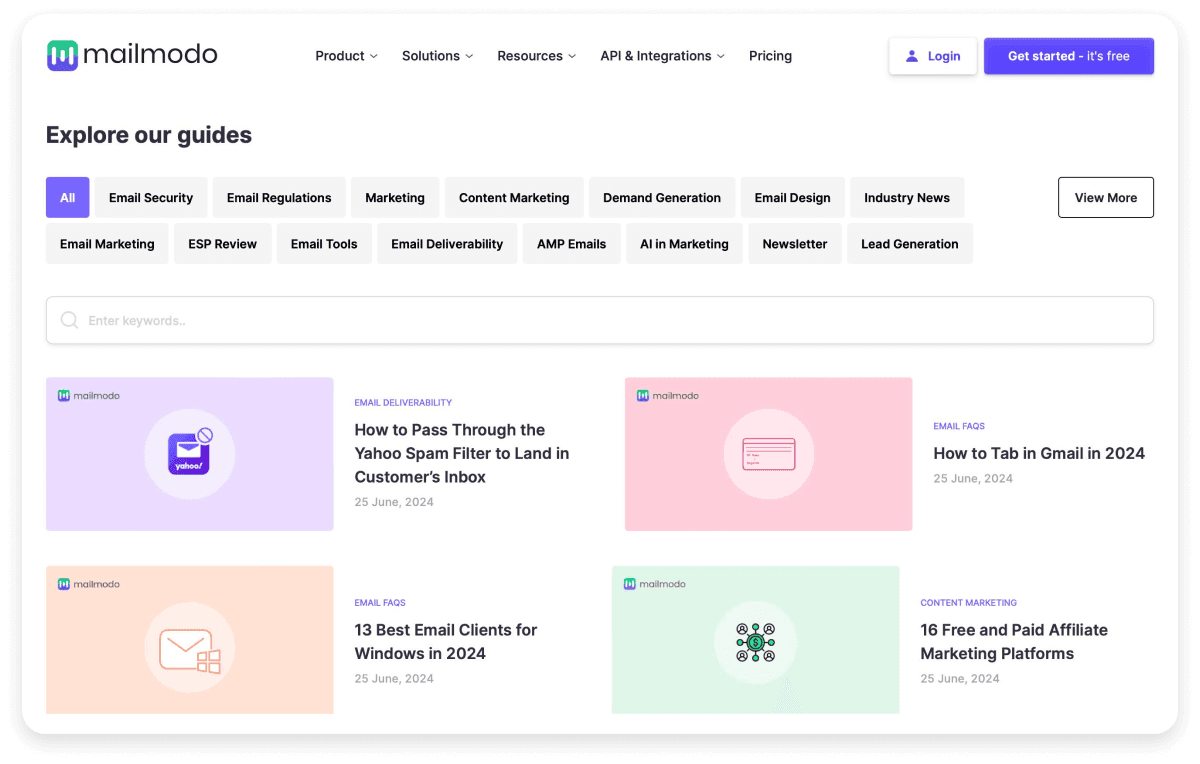
Social media platforms like Facebook, Instagram, Twitter, and LinkedIn enable direct interaction with your audience through posts, images, videos, and stories. Follow these best practices for creating a brand image through social media.
- Develop a consistent social media presence by regularly sharing engaging content across relevant platforms.
- Repurpose your content to each platform’s demographics and preferences.
- Utilize a variety of formats, such as eye-catching images, thought-provoking questions, or short video snippets, to capture attention.
- Respond to comments and messages promptly to foster a sense of community and demonstrate responsiveness.
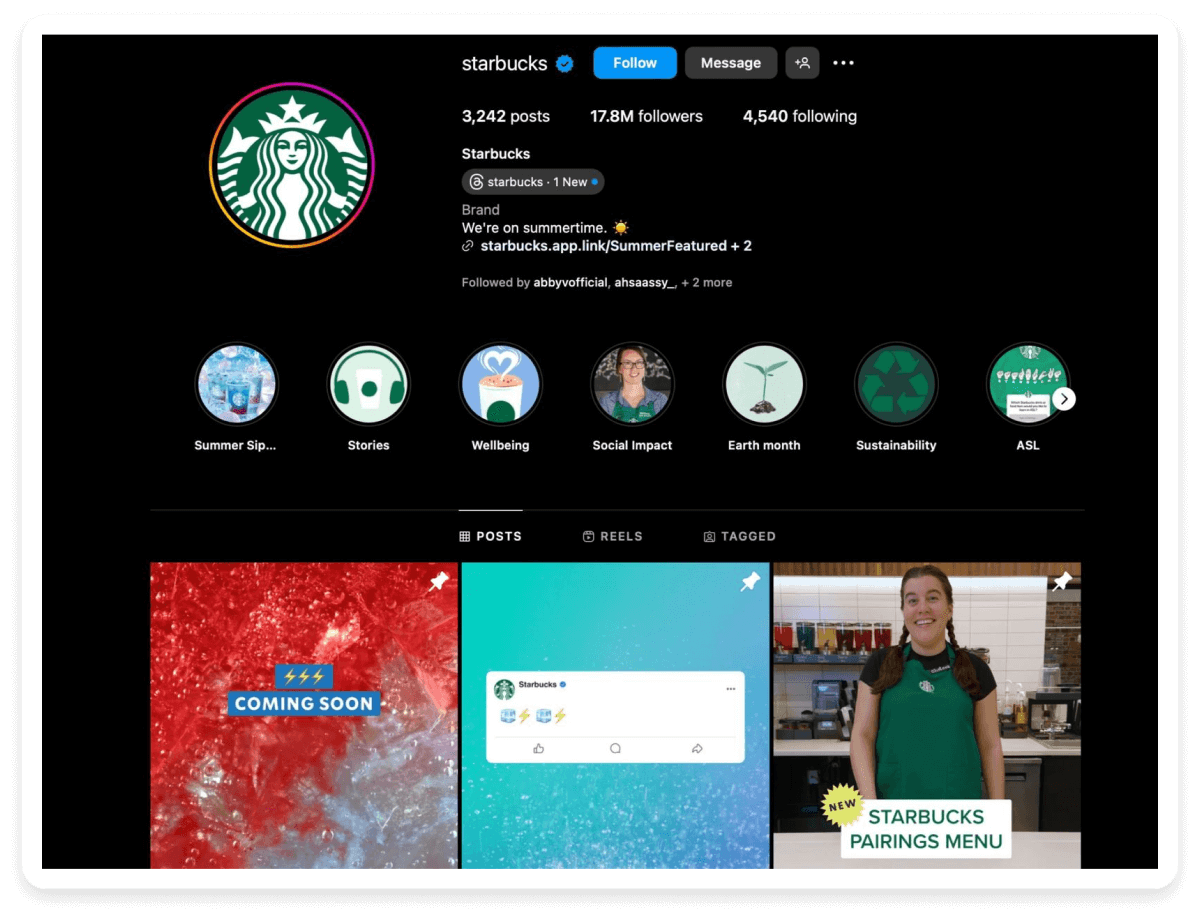
Video content on platforms like YouTube, Vimeo, and social media channels offers visual storytelling opportunities via informative tutorials, product demos, and customer testimonials. The following ideas will help you excel in video content marketing.
- Create informative or entertaining videos that resonate with your audience and encourage sharing.
- Invest in quality production or use tools for DIY(do it yourself) videos.
- Optimize video titles, descriptions, and tags for SEO.
- Engage viewers with calls to action(CTA) and encourage subscriptions.
4. Newsletters
Newsletters deliver curated content directly to subscribers' inboxes, fostering ongoing engagement and brand loyalty. You can use email newsletters to provide valuable information about product updates, industry trends, and exclusive offers. Keeping the following tips handy will help you master marketing via newsletters.
- Maintain a direct line of communication with your subscribers through regular newsletters.
- Deliver valuable content, keeping them informed and engaged with your brand.
- Build a subscriber list through opt-ins or sign-up forms on your website and social channels.
- Segment your audience based on interests and behaviors to personalize content.
Using an ESP like Mailmodo can be a good idea if you want to create and send engaging email newsletters with ease. It also allows you to build interactive emails without writing even a single line of code.
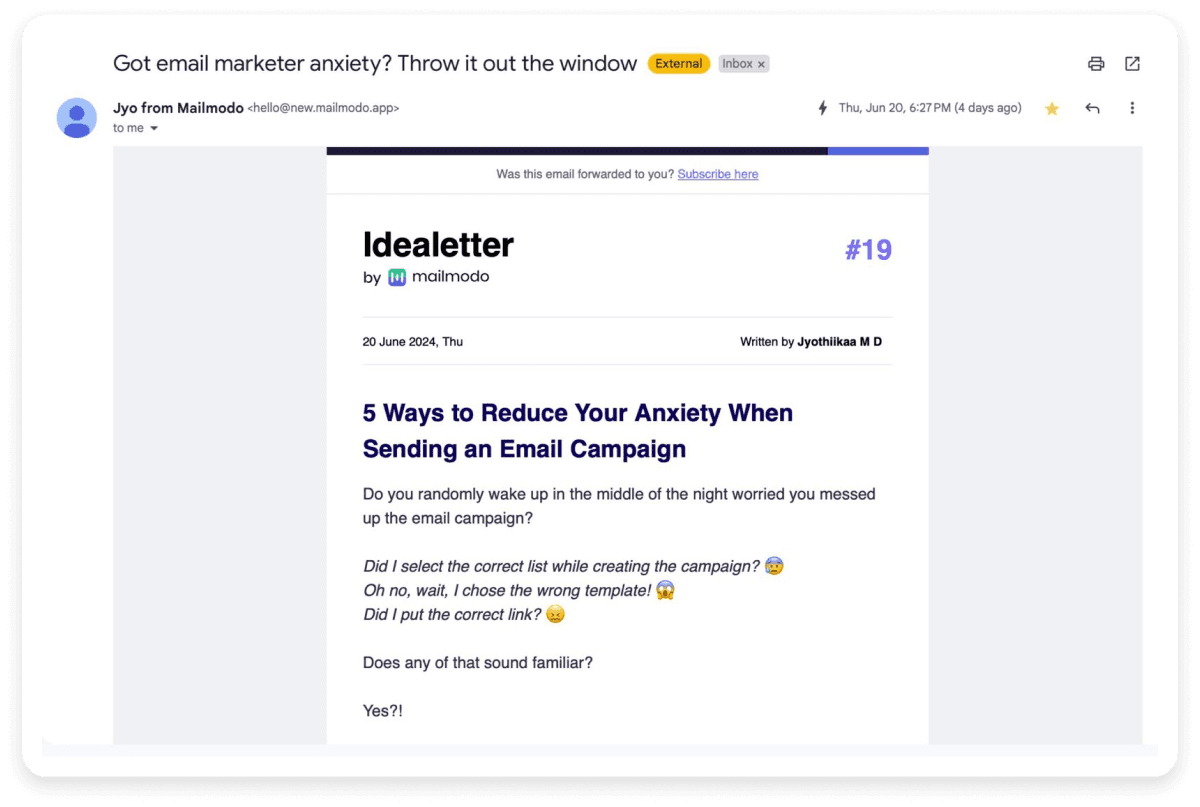
5. Ebooks and white papers
White papers and ebooks provide comprehensive insights, research findings, or guides on specific topics relevant to your industry. Follow these tricks to win over this form of marketing.
- Conduct thorough research and analysis to produce authoritative content.
- Offer these resources as downloadable content in exchange for email addresses, effectively generating qualified leads for your sales funnel.
- Ensure your ebooks and white papers prioritize valuable content and practical advice over purely promotional messaging.
- Promote these resources through email campaigns, social media, and guest blogging to establish thought leadership.![Ebooks and white papers]
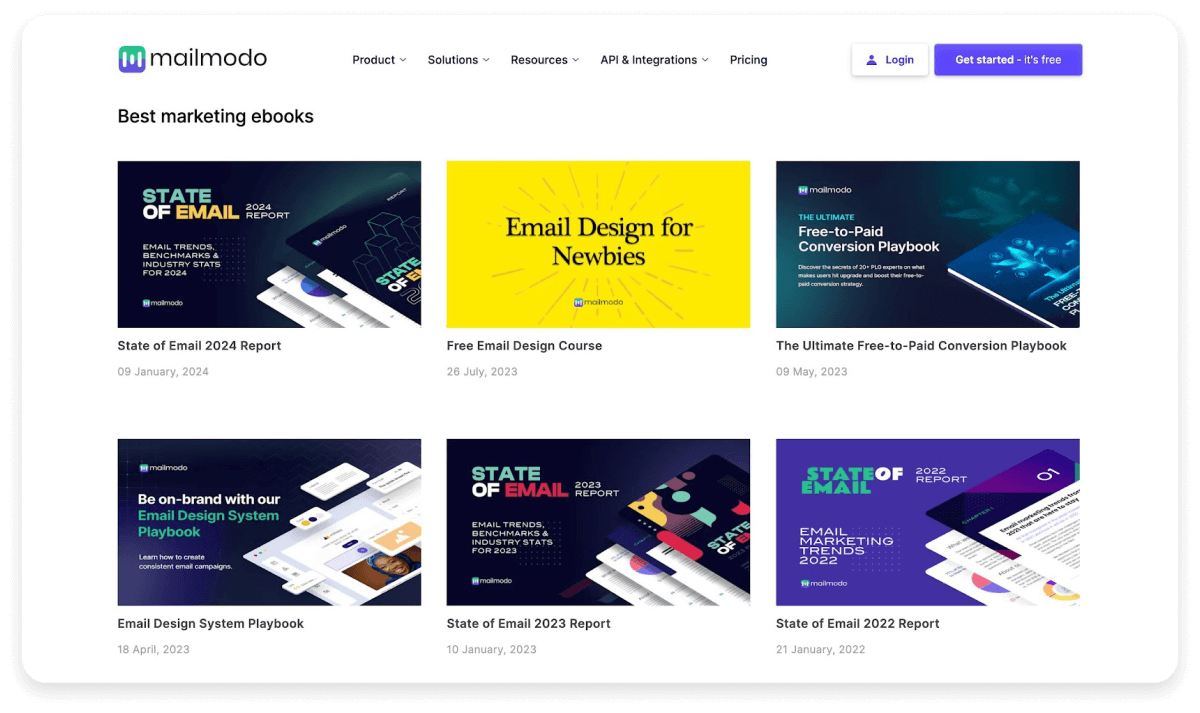
6. Podcasts
Podcasts allow for in-depth discussions and storytelling, catering to audiences who prefer audio content. This is an emerging form of content marketing, and according to Spotify, 83% of millennials use audio to reduce their stress levels, and 77% see audio as a mental health resource.
- Choose a niche topic and format, like interviews or solo commentary.
- Invest in quality audio equipment for clear sound.
- Publish episodes on platforms like Apple Podcasts, Spotify, and Google Podcasts.
- Promote episodes on social media and collaborate with industry influencers for wider reach.![Podcasts]
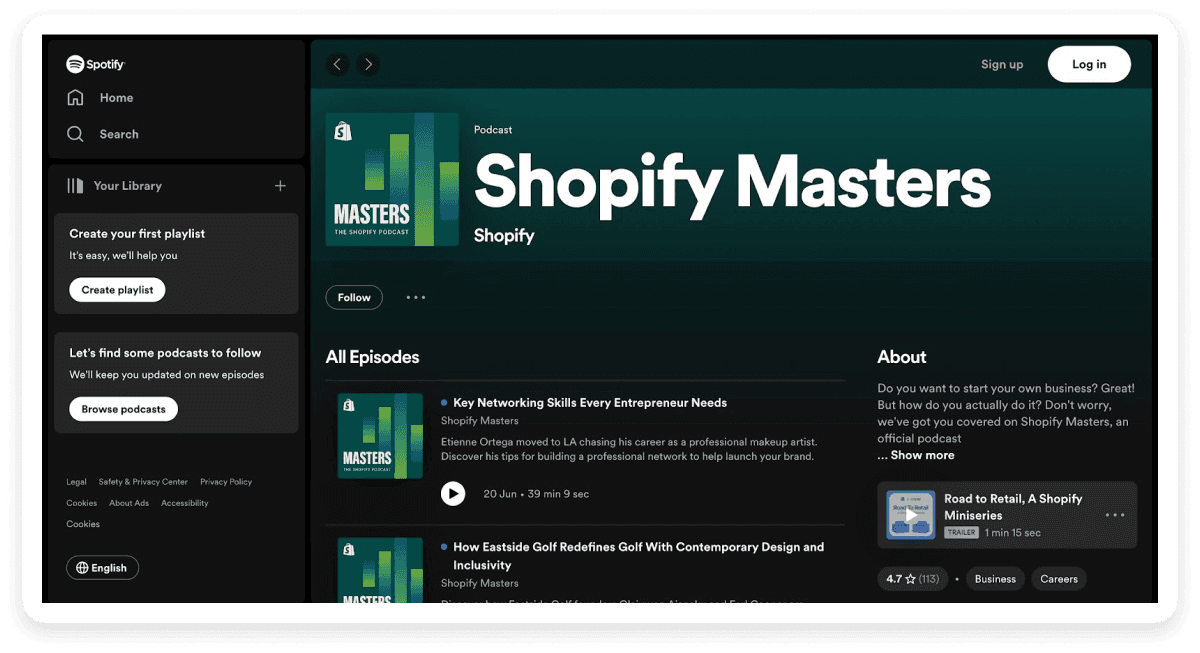
You can take Mailmodo’s Growth Chat as an example that talks about everything related to marketing and how you can increase your conversions.
How to build your content strategy
To reap the benefits, you need a solid content marketing strategy in place. Here's a quick overview of the key steps:
1. Define your target audience
Understanding your audience's needs, interests, and pain points is integral to developing great content that resonates with them and captures their attention.
If you’re a fitness brand and your target audience is busy professionals trying to stay healthy, your audience’s needs may include quick workout routines and nutritious meal ideas that align with their long work hours. This means that you can tailor your content around easy tips and tricks that provide them with the most value.
2. Establish clear goals
Setting clear goals and objectives guides your strategy toward success.
For example, if your goal is to increase website traffic by 20% over the next six months, an objective directly related to this goal could be to publish two blog posts per week to attract more organic traffic.
3. Create helpful content
Ensure that your content addresses the questions and problems that your audience faces. This involves building helpful, unique, and engaging content that shows original research and provides actionable value.
This could include detailed how-to guides or bite-sized videos that explain how to use your products effectively. Studies have shown that 77% of the most popular content are how-to articles.
4. Choose the right distribution channels
Identifying appropriate distribution channels for your content is critical. You should reach out to your target audience on the platforms where they spend the most time. Social media marketing platforms, blogs, email, and video platforms are some of the most popular distribution platforms for online content marketing.
If your audience is primarily on LinkedIn and Instagram, you should focus on creating visually appealing posts for Instagram and professional articles for LinkedIn to connect with them effectively.
Continuous improvement is the secret to a successful content marketing strategy. Measuring and analyzing the impact and performance of your content using tools like Google Analytics can provide valuable insights into potential areas of improvement. Regular optimization based on this information can help improve future campaigns.
You can track key metrics such as engagement rates and time spent per page to see how well your best content performs. This can provide you with actionable tips for improving and adjusting your content marketing strategy.
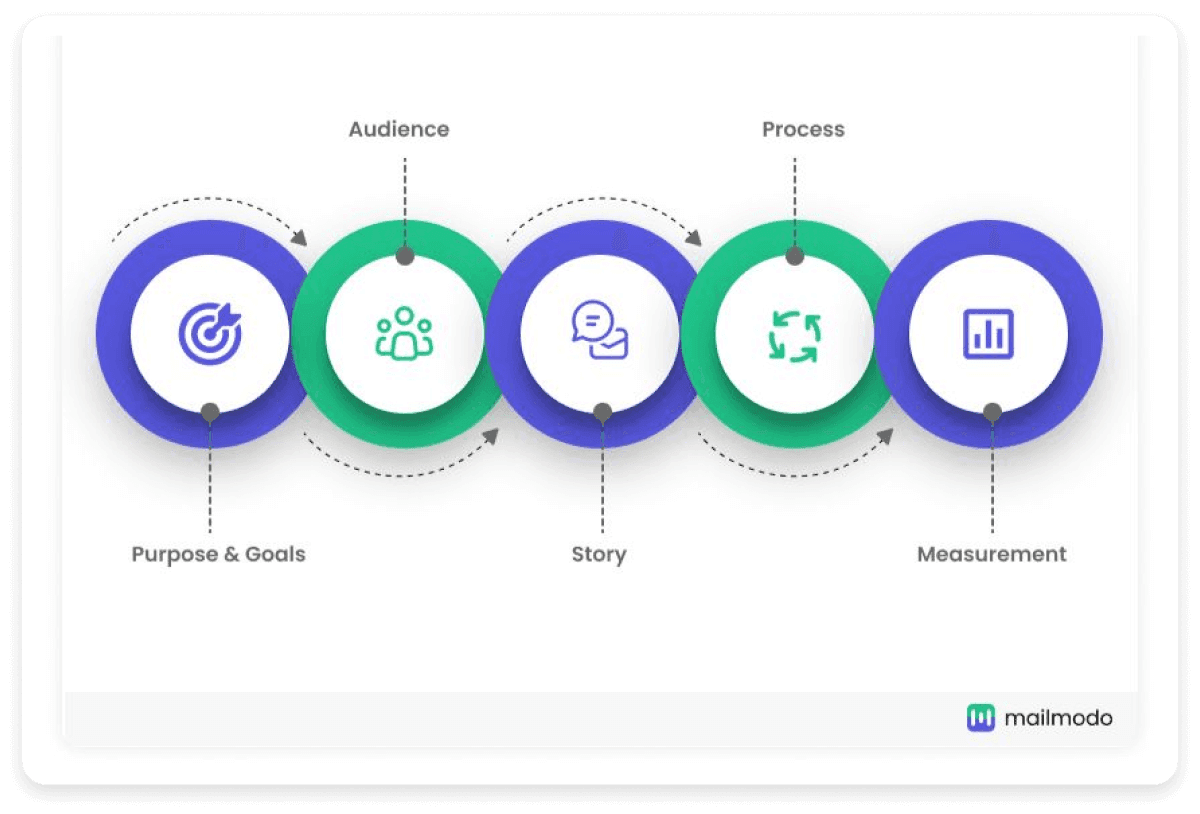
SEO in content marketing
Search engine optimization and content marketing are like two sides of the same coin. SEO paves the way for discovery, while content marketing provides the value that keeps users engaged. By working together, they create a powerful marketing force that attracts a large audience and new visitors for the first time.
By using relevant keywords throughout your content and landing pages, you're making it easier for search engines to understand what you offer. This increases the chances of those people landing on your website who are searching for those topics.

Use of AI in content marketing
The world of content marketing is constantly evolving, and one of the most exciting advancements is the rise of artificial intelligence (AI). While AI isn't here to replace human creativity entirely, it can be a powerful tool to streamline your content marketing workflow and keep you updated with new content marketing trends. 70% of content marketers surveyed use AI tools to assist with brainstorming content development, including creating outlines. Here's how AI is making waves in content marketing:
- Content brainstorming and topic ideas: AI can analyze vast amounts of data to identify trending topics, audience interests, and potential content gaps in your niche.
- Content creation assistance: AI can help draft outlines, generate initial paragraphs, or even create sub-headers. This frees up your time to focus on innovating the new type of content, which might prove helpful.
- Content optimization: AI can analyze your content and suggest improvements for SEO purposes. It can identify relevant keywords, optimize content structure, and even check for readability.
- Personalization: AI can help personalize your content marketing efforts. By analyzing user data and preferences, AI can tailor content recommendations or personalize email marketing campaigns, leading to a more engaging experience for your audience.
It's important to remember that AI is a tool, not a replacement for human creativity and expertise. The best content marketing strategies leverage AI to streamline tasks and enhance content, but human interference remains crucial for ensuring quality and audience relevance.
Curious how AI can breathe new life into your lifecycle marketing strategy? This video dives deep, exploring how ChatGPT's rise in Google Trends reflects a growing shift towards AI-powered user engagement that can transform dormant customers into loyal brand advocates.
Best practices of content marketing
To excel in content marketing, it is crucial to follow established best practices. This section will explore 5 essential practices that can elevate your content marketing efforts and deliver better results.
1. Build buyer personas
Researching your buyer personas and developing content that resonates with them is the first step to building engagement. This means understanding the specific types of people interested in who you are and what you offer.
For instance, if you sell outdoor adventure equipment, your ideal buyer persona may be ‘Alex’- a 28-year-old camping enthusiast. To create content that appeals to Alex, you may create blog posts about the best hiking trails or develop videos that teach him how to set up a campsite in the wilderness. This ensures that your content is practical, relevant, and specific.
2. Maintain consistent branding
Consistent branding across all platforms is essential for reflecting your brand’s voice, values, and tone. If your primary focus is friendly and helpful customer service, this should be apparent in your website design, social media posts, and visual branding.
If you run a small coffee shop with a cozy ambience, your social media posts should also reflect this. This ensures that when your customers see your content, they can instantly recognize your brand.
3. Develop a content calendar
An editorial calendar can help your business plan content creation and schedule distribution across different platforms. This creates a steady flow of helping content while maintaining your presence across various channels.
This can keep your audience coming back for more by helping them view your business as a trusted source for valuable tips, tricks, and advice.
4. Promote your content
Promoting your content across various channels like social media, email marketing, and more is highly beneficial. This helps create an omnichannel approach that can expand your reach to a broader audience.
For example, if you run a food blog and just posted a pizza recipe, consider promoting it through a photo on social media and an email to your subscribers with the link to your website. This increases traffic and spreads the word about the value your business provides.
5. Engage with your audience consistently
Engaging with your audience by responding to comments, messages, and feedback can enhance customer loyalty and build trust. This means being available to chat with your audience when they have questions or comments.
For example, if you regularly publish videos on your YouTube channel, respond to comments with additional tips and thank them for supporting your content. This encourages them to keep viewing your content and builds trust.
Final takeaway
In the ever-evolving digital marketing trends, content marketing stands out as a powerful tool for building relationships, not just reaching customers. By consistently making informative blog posts, videos, or social media content that solves their problems, you'll build trust and become a brand they remember. This means more people will know your brand, choose you in the end and even recommend you further.
If you are a brand or a business that is looking for a marketing strategy to follow, content marketing is definitely a reasonable consideration. By following the best practices and the steps to follow outlined in this guide, you can leave the competition behind and be on your way to achieving long-term success.


















